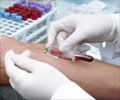Scientists are pondering the fact that Hepatitis E virus infections which can be fatal in pregnant women, and which was recently thought to be confined to China
Scientists are pondering the fact that Hepatitis E virus infections which can be fatal in pregnant women, and which was recently thought to be confined to China, India and developing countries, has now arrived in Europe. The scientists were at the Society for General Microbiology's 161st Meeting at the University of Edinburgh, UK, which runs from Sept. 3-6, 2007.
Hepatitis E virus is one of the few viruses which has been shown to be transmitted directly from animals through food. It was recently thought to be confined to developing countries, and although scientists are still unsure exactly how it spreads to people, direct contact with pigs or eating contaminated pork products is a likely route.“If this proves to be a relevant route for pig to human infection for Hepatitis E in Europe, food safety regulations might need to be adapted accordingly”, says Dutch researcher Erwin Duizer. “Where we do find Hepatitis E virus identified in Europe then the strain is usually closely related to the viruses found in pigs in the same country”.
Far fewer cases of Hepatitis E virus are reported than actually occur, since doctors currently rarely ask for the relevant diagnostic tests in many industrialized countries. Although they do not yet know the exact route for most infections, the scientists do know that these viruses can infect people if they eat infected pig’s livers without cooking them.
Genetic material from Hepatitis E viruses has already been detected in pig livers being offered for sale in Japan, USA and the Netherlands, proving that European pigs are in contact with Hepatitis E. Wild boar products could present a similar risk.
“To improve understanding of this disease, doctors should routinely start asking for Hepatitis E screening tests, even if the patient has not been travelling in India, China or other countries where they might expect to be at risk of infection” says Erwin Duizer. “Once more people are correctly diagnosed with viral Hepatitis E, they can be treated more effectively and we can learn more on the transmission routes.
Current rates of diagnosis are up to13% of acute viral hepatitis patients in European countries, but we think the true rate is much higher. Up to 3% of blood donors in Europe show evidence of exposure to the virus through detectable antibodies”.
Advertisement
Source-Eurekalert
LIN/C











